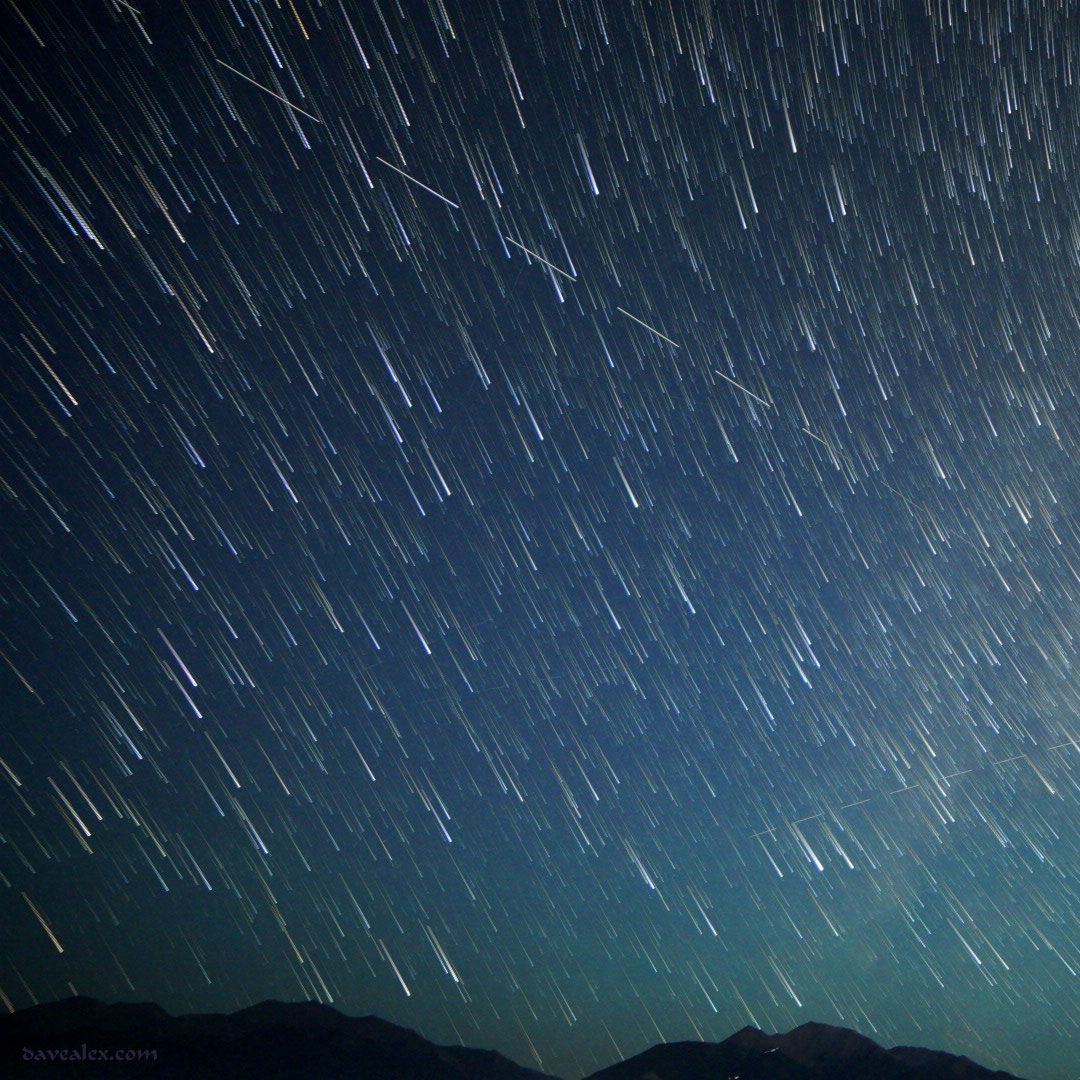This year has been a lot of fun watching meteorite showers, and Perseids 2016 did not disappoint. I was able to watch the skies a week prior to the peak on the east side of the Collegiate Peaks near Buena Vista, then again the night before, during and after the peak of the Perseids (peaked Aug 11, 2016).
The Perseids are created by the dust trail from comet Swift Tuttle as our orbit intersects with its debris each year. This year was a special “outburst” year thanks to our cosmic friend Jupiter whose gravity altered the course of some debris last year; making way for a more dusty intercept on this year’s orbit for Earth!
In Colorado about a week before the peak, the days were socked in with clouds and some rain, but after midnight the clouds cleared out and provided a wonderful display of the stars and Milky Way over the Collegiate Peaks from the Arkansas Headwaters Recreation Area south of Buena Vista Colorado. Although I didn’t capture it as it was left of my field of view, I saw a massive fireball which I can only assume was a Perseids meteorite! Several other meteorites I witnessed that night were likely Perseids.
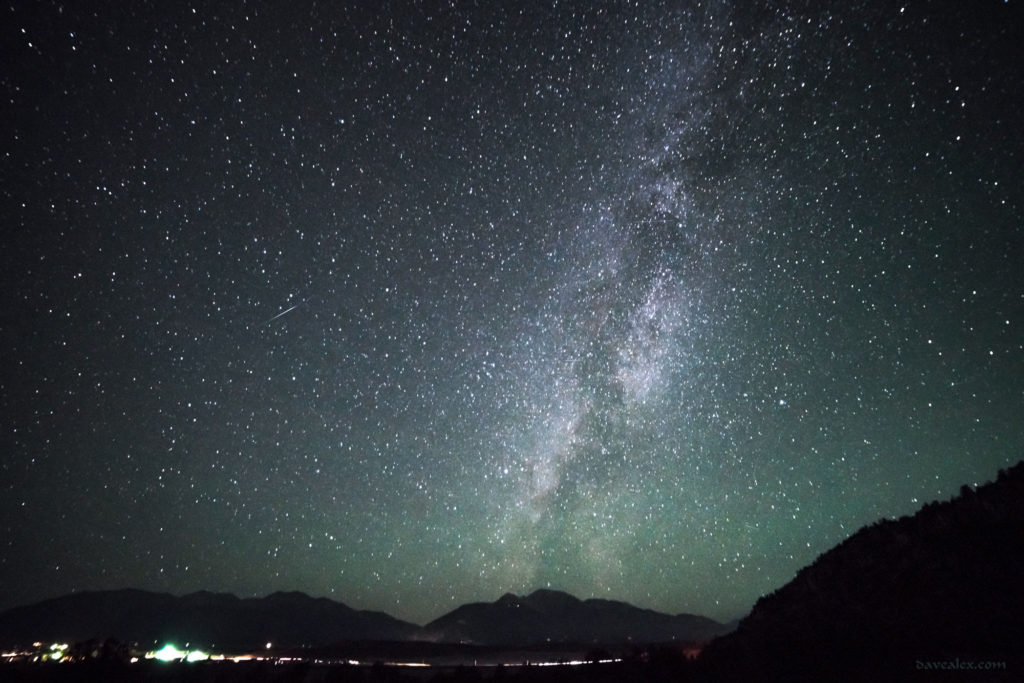
I took this picture with Sony Alpha A7RII with Rokinon 14mm f2.8 prime lens. Manual focus was set to infinity, f2.8 and exposure was 8 seconds at ISO 12800, obviously on a tripod. I have found that opening the exposure over 8 seconds leaves a blur/trail with stars that I do not like, so I had to adjust the ISO to absorb more light. I made some minor adjustments in Lightroom.

I thought this was a fun shot, it was a video capture of the stars including Milky Way using the A7RII Star Trails app. This is a fun little app but I have not explored it deeply yet to discover if there are many creative uses for it other than the obvious. A couple of satellites are also present streaking across the sky over each 8 second exposure.
Fast forward a little under a week, to the days around the peak of Perseids 2016. Each of the nights here where I live near Larkspur Colorado it was cloudy and stormy before and after dusk. But luckily each night all the storms moved off east and the skies cleared up in time for the moon to set and give great dark skies for viewing this “outburst” year.
I set up in my front yard pointing towards the south/western sky which is the largest portal I have through my trees. I was able to witness many Perseids shooters and caught a couple in my field of view.
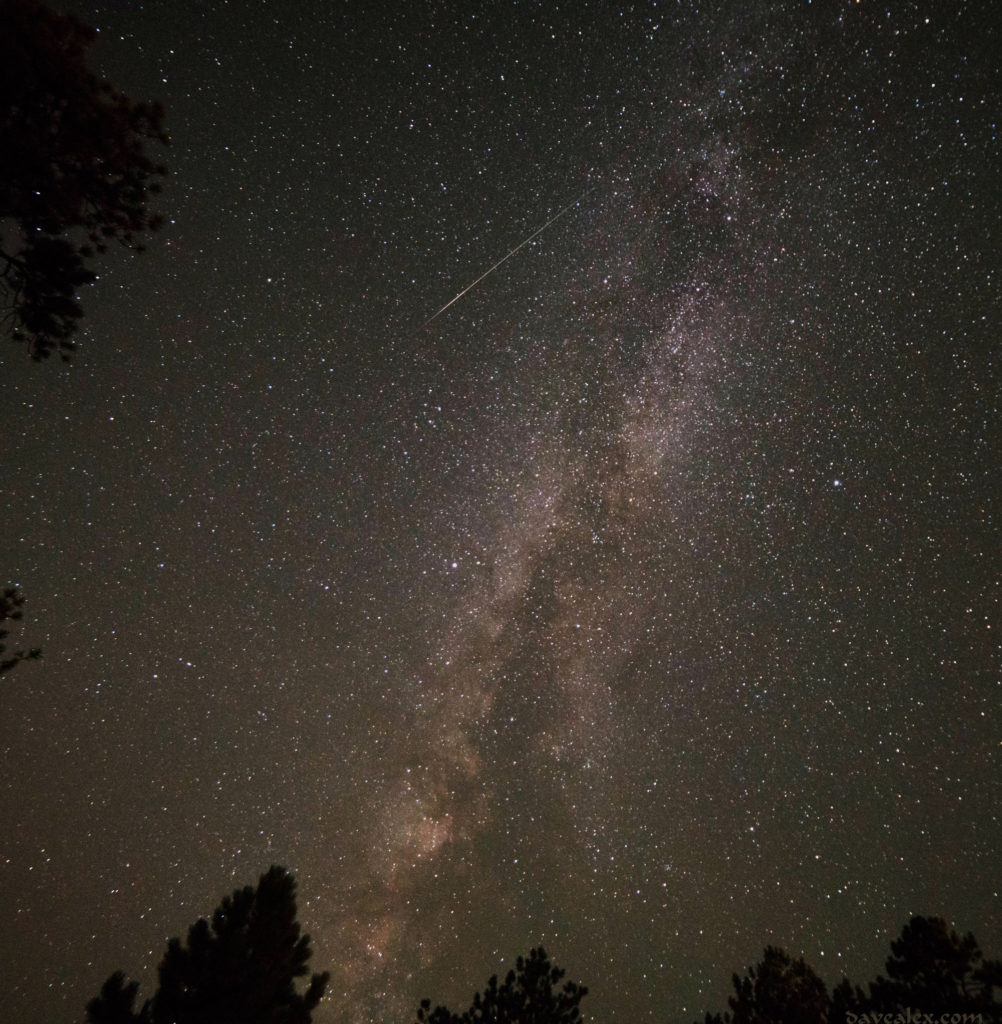
In the above photo, I took the 3 shots before and after the meteorite and stacked them in Photoshop. A brief summary of the process that I’m still only beginning to use
- Open all the photos as layers in Photoshop
- Select all layers and then use the alignment feature of the stack
- Create a Smart Object
- Use the Smart Object / Stack Mode function and Median setting to combine all the light of the photos into a single picture
This is the first time I played with this workflow and will be exploring it further to fine tune the results, but i’m quite impressed of what Photoshop can do merging the light of several photographs; remember I only like to take up to 8 second exposures of the stars, so this gave me almost a minute worth of light. I think that too many pictures will confuse the auto-alignment feature of Photoshop, I tried another experiment with 12 photos and the results looked horrible. I have to play with this more (if you have any suggestions here, would love to hear from you in the comments!)
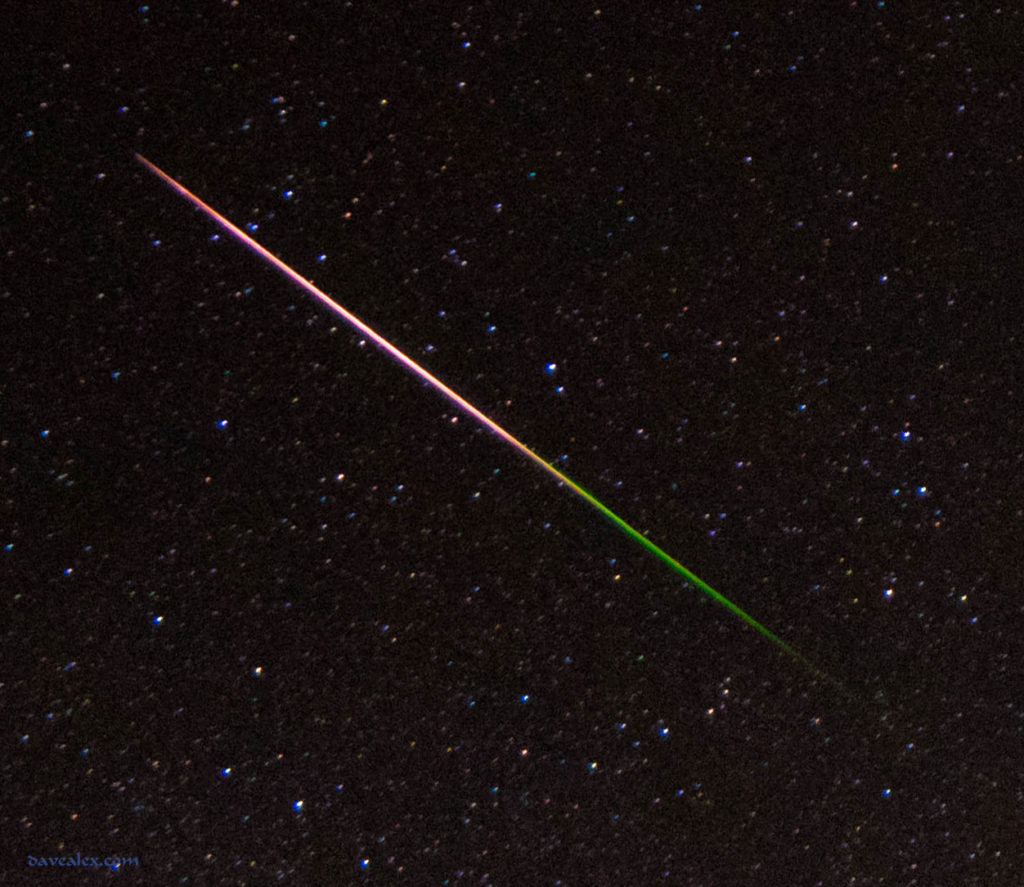
I caught another amazing meteorite and did a digital crop to show the spectacular colors of Perseids meteorites! This was the largest shooter I saw the eve prior to the peak.
Then came the peak, which again was forecast to be up to double of other years! I set my alarm each hour after dark and went outside to witness the show, but it was very cloudy and even had a thunderstorm to our south. I was getting bummed as by 12:30 we were still socked in with clouds! At the 1:20 alarm, however, the sky was crystal clear; amazing what can happen in less than an hour here in the Colorado foothills! The sky stayed clear until dawn, when it got cloudy again. Perfect timing, mother nature!
I typically count meteorites in two categories (that’s all I can keep track of that late in the night); one is total number and the second (I use my hands for this one) is for “large” meteorites. Large ones are definitely not all fireballs, and is definitely subjective, but I like to remember how many ones I see that make me go “cool” or “wow”. Here is the play-by-play I posted to facebook for each 30 minutes I was watching…
- First 30 minutes, 54 shooters, 13 were large and several fireballs. Finally cleared up after a cloudy evening.
- Next 30. Count now at 83, with 29 being large, the last two were fireballs. This half hour has had more larger ones per capita…
- Next 30. 122. 39.
- Next 30. 159. 51.
- Next 30. 189. 66.
- Last 30 minutes. 231. 87.
Given that I live in a forest and have a limited window into the night’s sky, I think this is an amazing number, one of the best I’ve seen in the many many showers I’ve watched! I caught about 50 of these on my camera, which is definitely the most I’ve ever caught, but due to the wide angle (14mm, Rokinon f2.8 prime lens) most were really small and overall uninteresting. I did catch some spectacular fireballs in the field of view; but missed most which is par for the course.
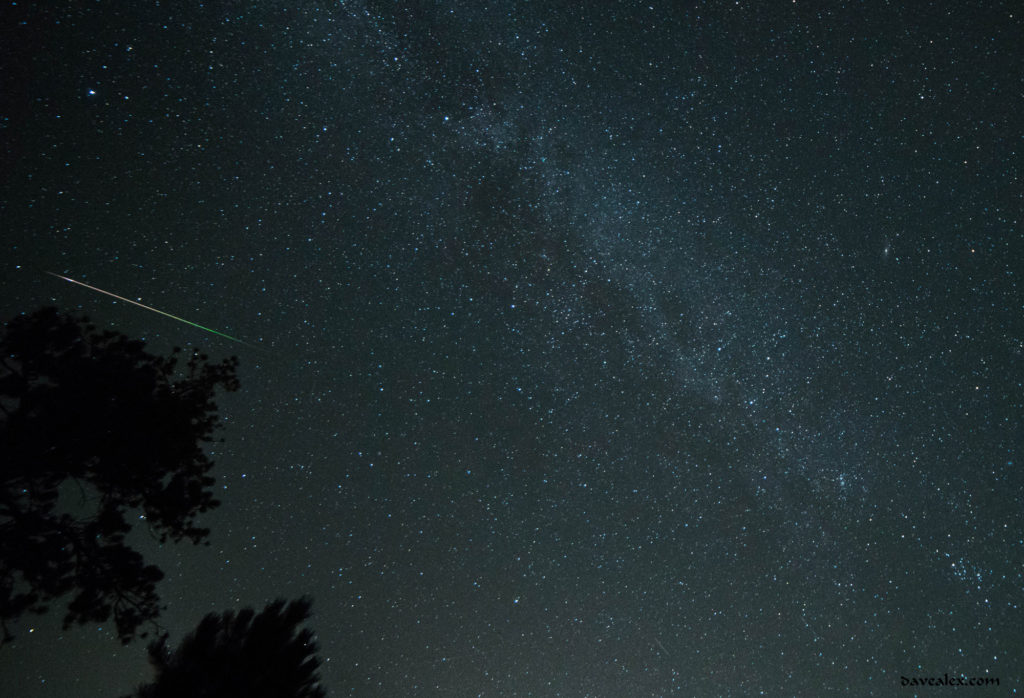
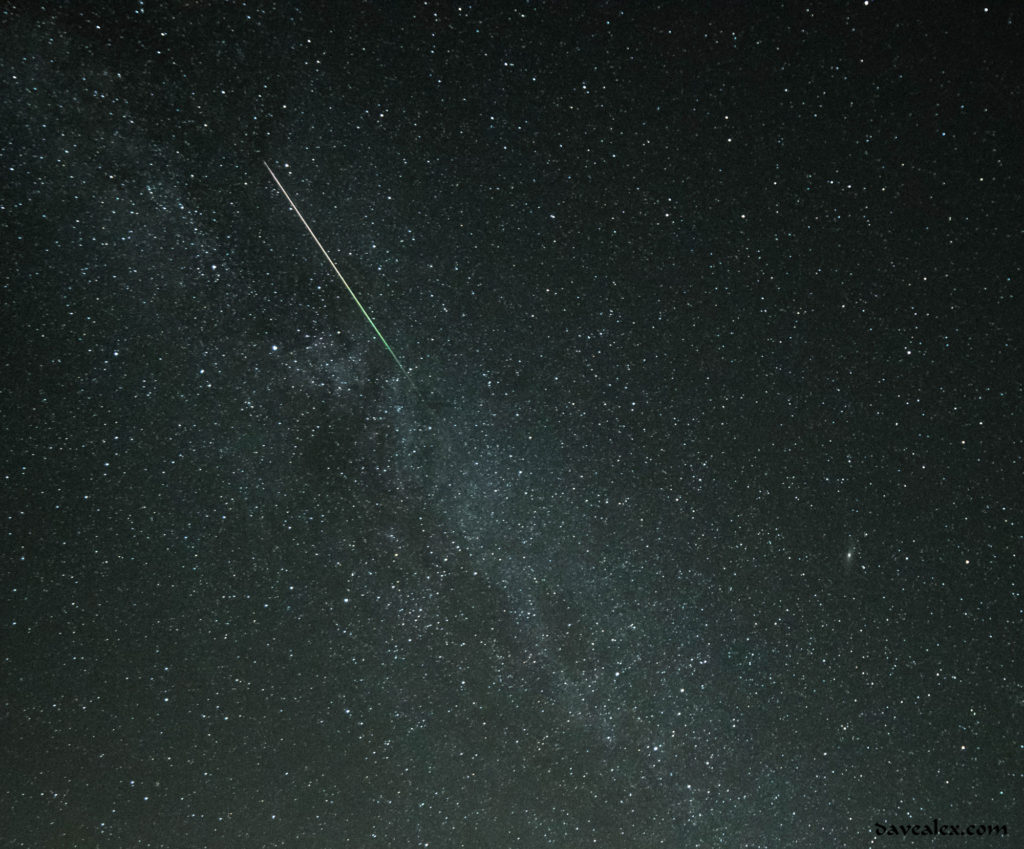
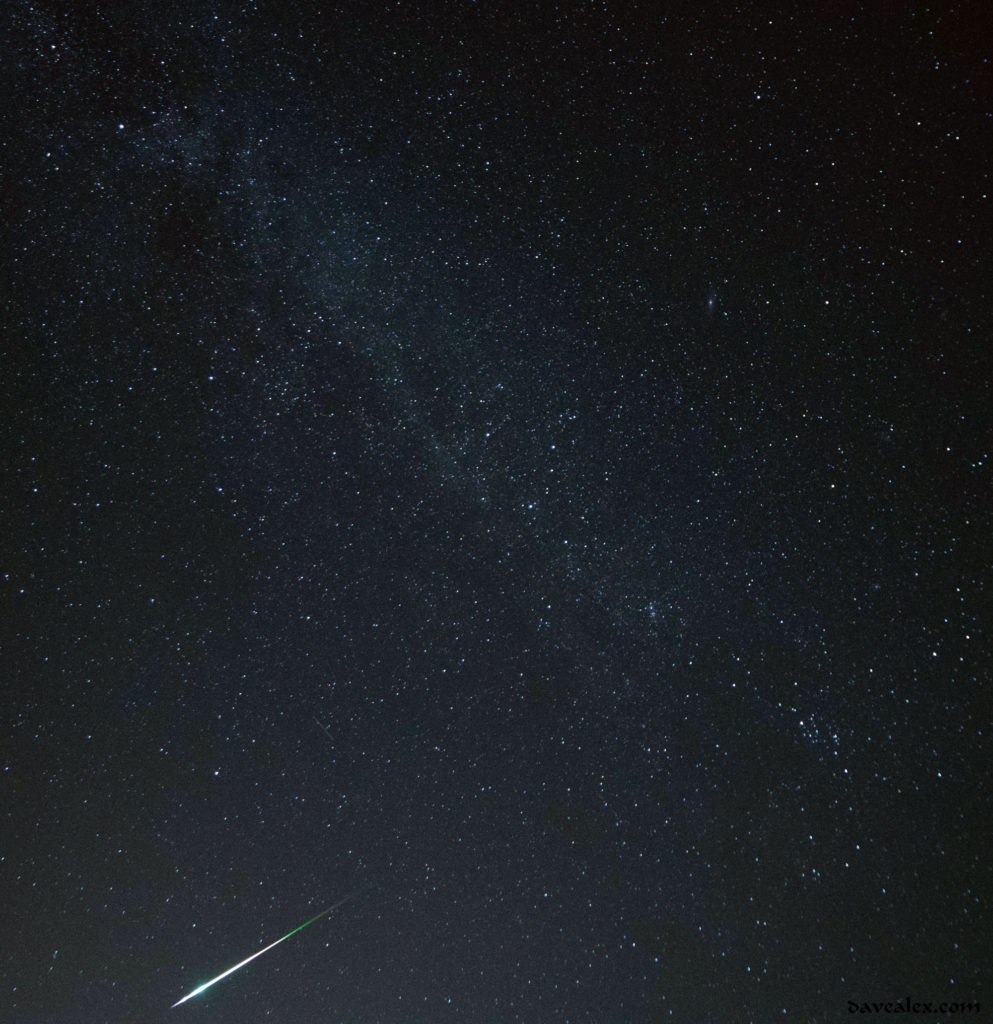
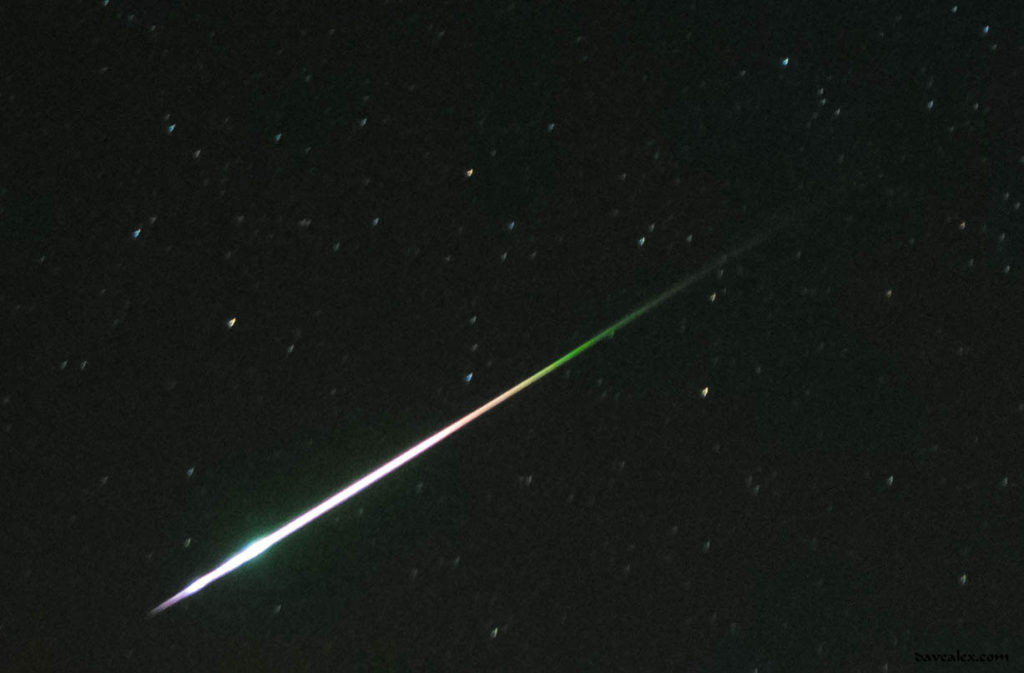
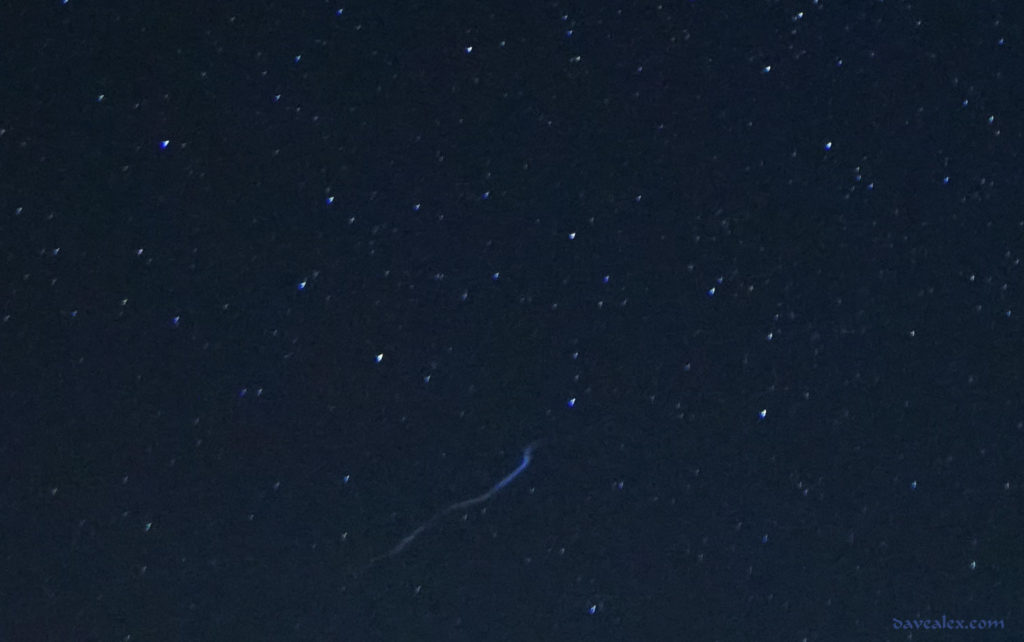
The night after the peak I was exhausted, so I missed setting the alarm reminding me to get up in the early morning hours. I did go out about 4:30 and saw a burst of about 15 in 15 minutes, 2 of which were “large” on my subjective scale…which surprised me on the morning after the peak! My cell phone app states that the shower’s window is July 17th through August 24th, so there are surely many more nights to experience this year!
